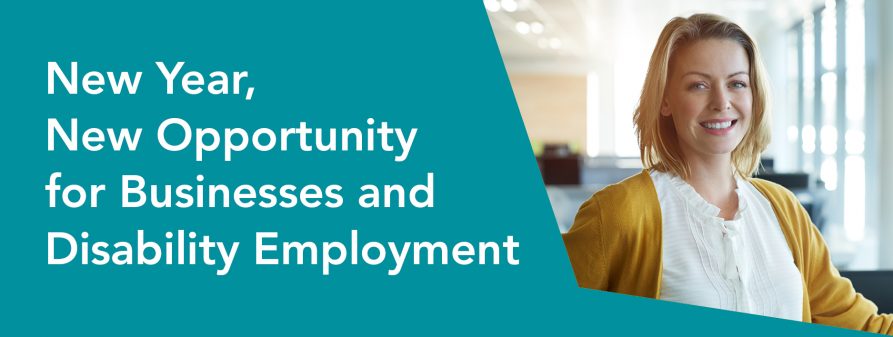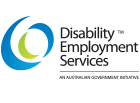
- Employers that hire people with disability see an average 28% higher revenue than their competitors and 90% lower staff turnover[1]
- Disability talent pool grew by over 30,000 in 2020[2]
- Disability Employment Services have more to offer businesses including quality employees and an opportunity to reduce cost on the recruitment process
- There is a need for companies to review their Diversity and Inclusion strategies
2021 provides a unique opportunity for businesses to rebuild even stronger workforces by recruiting employees with disability. According to Australian Bureau of Statistics figures, approximately 1 million Australians were unemployed[3] at the peak of the pandemic in 2020. Today, this figure has dropped to 952,100[4], paired with the fact that job advertisements have increased month on month since April 2020, with job advertisements now exceeding pre-COVID levels[5], it is beginning to show that businesses are starting to rebuild. As they do, it’s important that disability inclusion is central to these renewed workforces.
“Australians living with disability have often been overlooked in recruitment, with a 48% employment rate compared to 80% of the general public[6],” says Steve Carder, General Manager DES of leading Disability Employment Service, atWork Australia. “This is a missed opportunity as these workers have proven to be hugely beneficial to businesses’ productivity, staff turnover and bottom line.”
“Hiring a person with disability shouldn’t be seen as an issue to be overcome, but an opportunity to build stronger teams,” says Steve. “It’s well documented that employees with disability generate less turnover[7] and a superior attendance over their peers[8].” These benefits are echoed in other research, including a 2018 US study1 which showed that businesses were four times as likely to outperform their competitors’ shareholder returns if they prioritised the inclusion of those living with disability. These businesses achieved an average of 28% higher revenue, 30% higher profit margins and double the net income. Additionally, the average company that employs people with disability see staff retention go up by 90%[6], which allows them to focus on their business and not ‘revolving door’ recruitment.
The talent pool of those living with disability grew significantly in 2020 adds Steve. “The Disability Employment Services (DES) caseload rose by over 30,000 last year, making this the time for businesses to rebuild their team with solid foundations with employees living with disability,” Steve continues.
While 2020 has been devastating for many industries, jobs that are suited to many people with disability, injury or health conditions rose, says Steve. “During January to August, we saw more warehousing, factory work and delivery services roles become available, which are ideal for many of our clients who often need a first role to kick-start or re-start their CVs. These and similar industries in particular, have a huge opportunity to benefit from the existing disability talent pool.
“In fact, while unemployment has risen, atWork Australia placed over 6,000 people living with disability, injury or health condition into employment or further education, showing that there are still jobs out there, which we anticipate will grow as businesses rebuild.”
Unfortunately, while the time is right for Australia to address disability employment inequity, more work is needed to educate companies on how to engage the full talent pool, says Steve. “It’s important that businesses are aware of the free-of-charge support provided to them when hiring someone with disability.”
atWork Australia’s research with over 450 small, medium and large businesses found that the main reasons that companies use recruitment agencies are to find the right candidate (70%), save time on recruitment (56%) and to access job-ready candidates.
“Government funded Disability Employment Services offer businesses a range of provisions that go far beyond the main reasons companies engage recruitment services. Each placement is assisted by a Post Placement Support Coordinator who works with the employee and employers during the first year to ensure all needs are met, setting the foundation for long-term employment. Additionally, if eligible, companies can access workplace adjustments to accommodate someone with a disability.”
Financial support for businesses in accommodating people with disability will become particularly important in March, as JobKeeper payments come to a close and employers reassess their workforce.
“As we enter 2021, it’s imperative that we continue to look forward with an optimistic caution,” says Steve. “Businesses we are speaking to are struggling with employee wellbeing as well as recruiting and retaining staff. As JobKeeper comes to an end, employment insecurity and fear of redundancies is set to increase mental health conditions, one of Australia’s leading forms of invisible disability. This is set to make workplace experts who understand disability, such as Disability Employment Providers, an essential form of support in recruitment.”
Tools like atWork Australia’s Disability Awareness Training, empower businesses to build a more accessible and inclusive workplace and confidently support their employees with disability. It provides employers with practical tools and strategies to gain a deeper understanding of how to attract, recruit, and support a diverse workforce. The cost-free sessions include an interactive Q&A webinar, and cover topics such as enhancing awareness and knowledge of disability, challenging attitudes, gaining practical tools and strategies to make the workplace accessible to all.
“Moving into 2021 businesses have the opportunity to help shape a society and their national workforce, that is inclusive for all people living with disability, injury or a health condition, while taking on employees that are proven to benefit businesses,” concludes Steve.
For more information about atWork Australia, assistance in the recruitment process, and how it can support employers, please visit: https://staging.atworkaustralia.com.au/recruiting-people-with-disability/
For more information about atWork Australia’s Disability Awareness Training, please visit: https://staging.atworkaustralia.com.au/dat/
Sources:
[1] Accenture – Getting to Equal: The Disability Inclusion Advantage – https://www.accenture.com/_acnmedia/PDF-89/Accenture-Disability-Inclusion-Research-Report.pdf
[2] https://lmip.gov.au/default.aspx?LMIP/Downloads/DisabilityEmploymentServicesData/MonthlyData
[3] https://www.abs.gov.au/statistics/labour/employment-and-unemployment/labour-force-australia/jul-2020
[4] Australian Bureau of Statistics. Labour force, Australia, November 2020
[5] Pre-COVID-19 job advertisement levels are defined as the 12-month average in the seasonally adjusted IVI series to February 2020.
[6] https://www.aihw.gov.au/reports/disability/people-with-disability-in-australia-2020-in-brief/contents/employment
[7] Australian Network on Disability: Business benefits of hiring people with disability https://www.and.org.au/pages/business-benefits-of-hiring-people-with-a-disability.html
[8] Visit www.jobaccess.gov.au for more information



